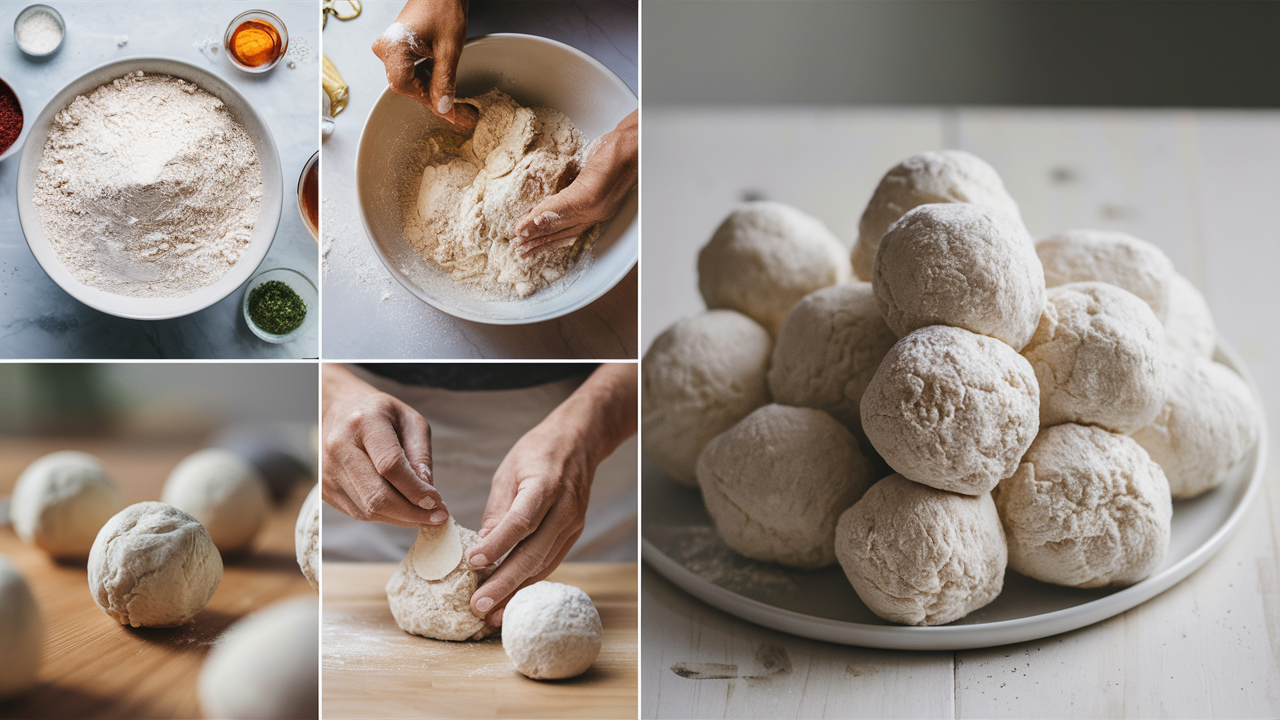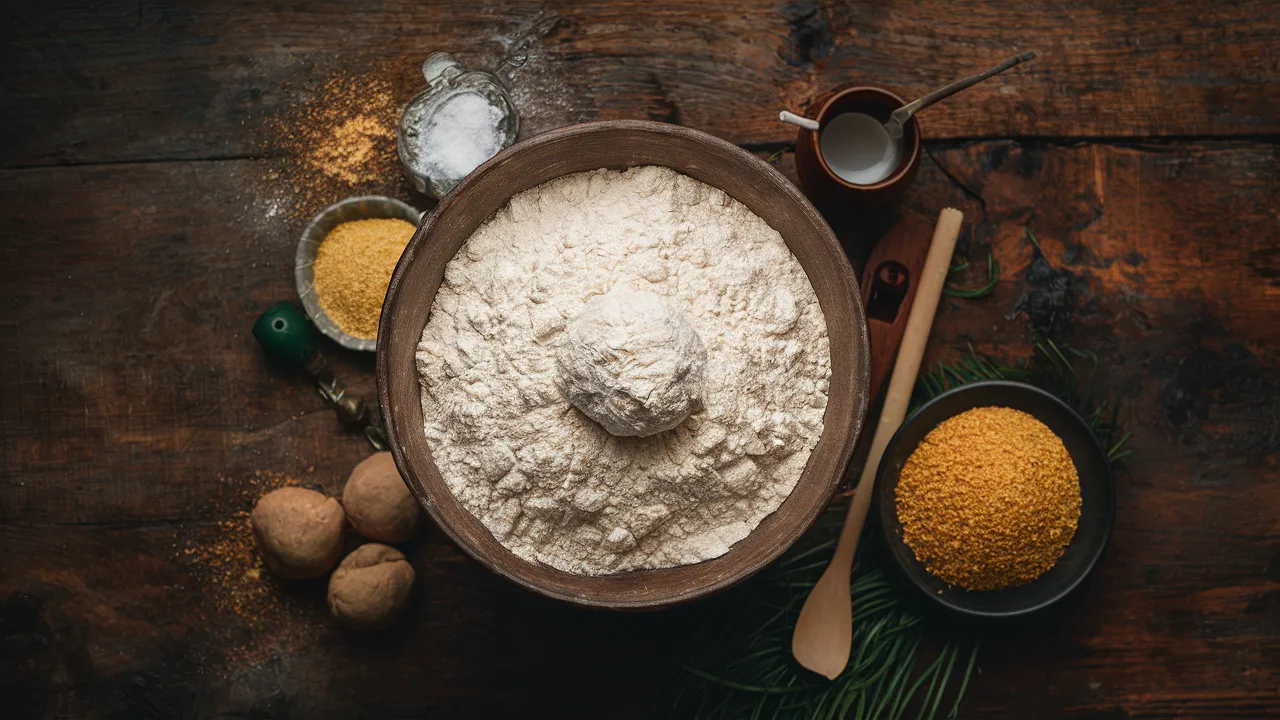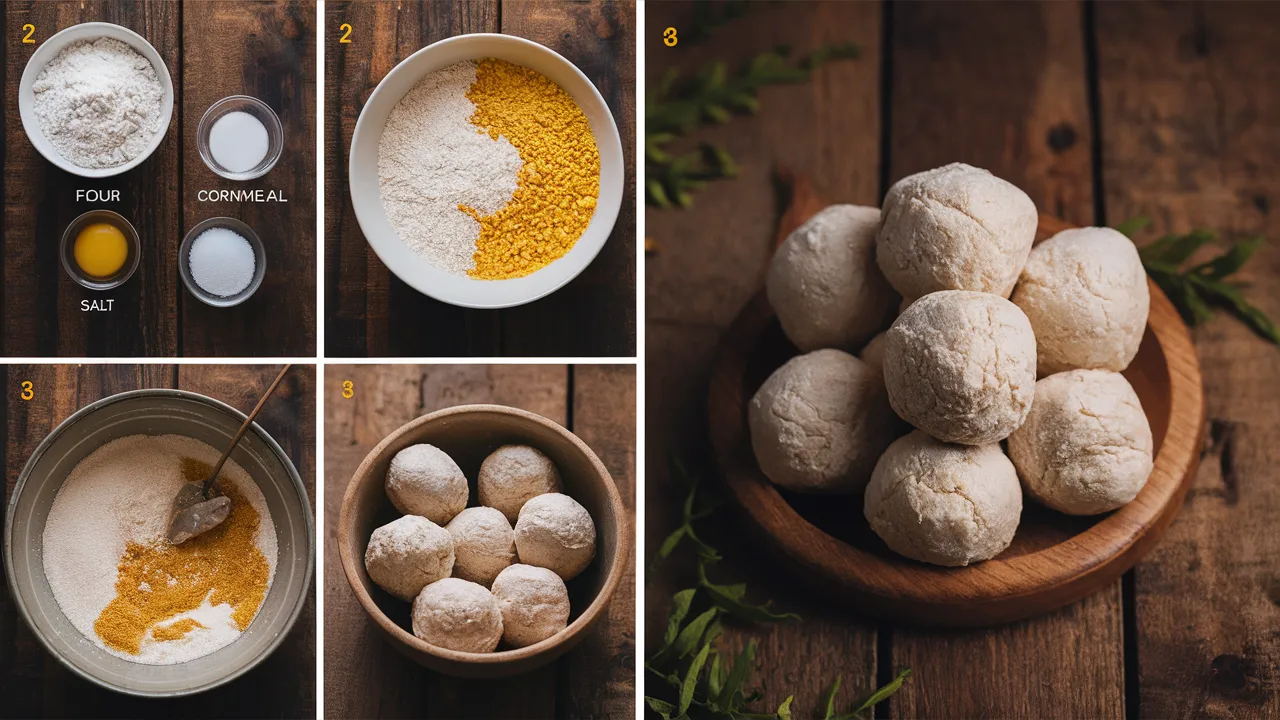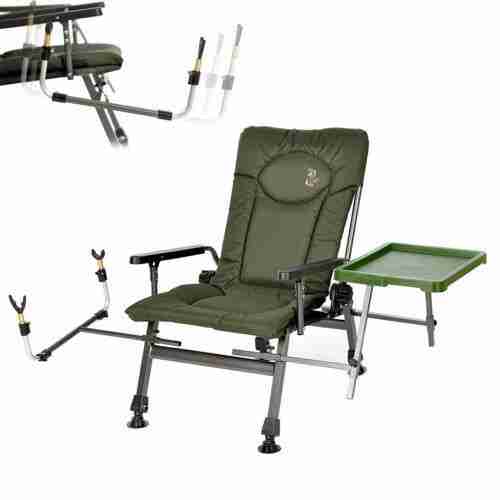
Make Your Own Dough Balls for Fishing A Step-by-Step Guide

8 min read
If you’re an avid angler, you know that the right bait can make all the difference between a successful day on the water and going home empty-handed. One bait that has stood the test of time is the humble dough ball.
In this guide, we’ll explore how to make your own dough balls for fishing, why it’s beneficial, and how to use them effectively.
Why Use Dough Balls?
Dough balls are popular among fishermen because they’re versatile, inexpensive, and can be easily scented or flavored to attract specific fish. They’re also more environmentally friendly than some synthetic baits, breaking down naturally in water.
Materials Needed for Dough Balls
Before you start, gather all the necessary materials. Here’s a basic list of ingredients and some optional additives to enhance your dough balls.
What Are The Basic Ingredients For Dough Ball?

- Flour
- Cornmeal
- Water
Materials Needed for Dough Balls
- Bread crumbs or other binders
- Flour
- Cornmeal
- Water or fish attractant liquid
- Bowl for mixing
- Spoon for stirring
- Plastic bag or container for storing dough balls
When it comes to fishing, many anglers swear by the effectiveness of dough balls as bait. Dough balls can be easily made at home and are known to attract a variety of fish species. To make your own dough balls, you will need the following materials:
Optional Additives:
- Flavoring: Garlic powder, vanilla extract, or anise oil to attract specific fish.
- Food coloring: To make the dough balls more visually appealing to fish.
- Cereal or breadcrumbs: Adds texture and helps the dough stay on the hook.
Materials:
- Mixing bowl
- Measuring cups
- Mixing spoon
- Plastic wrap or resealable bags
- Fishing hooks and line
Step-by-Step Guide to Making Dough Balls
Making dough balls is simple and can be a fun activity to do with family or friends. Follow these steps to create perfect dough balls every time.

1. Mix the Dry Ingredients
- In a mixing bowl, combine:
- 1 cup of flour
- 1 cup of cornmeal
- A pinch of salt
- 1 tablespoon of sugar or honey
- Stir the dry ingredients together until they are well mixed.
2. Add Water Gradually
- Slowly add water to the dry mixture while stirring continuously.
- Add just enough water until the mixture begins to form a thick, sticky dough.
- Tip: Don’t add too much water at once to avoid making the dough too runny.
3. Knead the Dough
- Use your hands to knead the dough until it becomes smooth and pliable.
- Adjust Consistency:
- If the dough is too sticky, add more flour.
- If it’s too dry, add a small amount of water.
4. Customize Your Dough Balls
- Add flavoring, food coloring, or other additives to the dough.
- Knead the dough again until the additives are evenly distributed.
5. Roll the Dough into Balls
- Pinch off small portions of the dough and roll them into balls:
- Size: About the size of a marble or larger, depending on the type of fish you’re targeting.
- Tip: Smaller balls are great for smaller fish, while larger balls work better for big fish like carp.
6. Cook or Dry the Dough Balls (Optional)
- Option 1: Boil the dough balls in water for 2-3 minutes to harden them.
- Option 2: Bake them in the oven at a low temperature (around 200°F) for 20 minutes.
- Option 3: Air-dry them for a few hours.
7. Store Your Dough Balls
- Store dough balls in an airtight container, resealable bag, or wrap them in plastic wrap.
- Storage Options:
- Short-term: Room temperature for up to 2 days.
- Long-term: Refrigerate or freeze them.
Mixing the Ingredients
Start by mixing equal parts of flour and cornmeal in a bowl. Gradually add water while stirring until you achieve a thick, dough-like consistency.
Achieving the Right Consistency
The dough should be firm enough to hold its shape but not too sticky. If it’s too wet, add more flour or cornmeal. If it’s too dry, add a little more water.
Shaping the Dough Balls
Pinch off small amounts of dough and roll them into balls about the size of a marble. Ensure they are compact to stay on the hook.
Flavoring Your Dough Balls
Fish are attracted to both natural and artificial scents. Adding these to your dough can make it more appealing.
Natural Scents
Consider adding garlic powder or anise extract to your dough for a natural scent that fish find irresistible.

Artificial Scents
You can also use store-bought fishing attractants. Just add a few drops to the dough mixture.
Coloring the Dough
Using food coloring can make your bait more visible in murky waters. Red and yellow are popular choices.
Cooking vs. No-Cook Dough Balls
There are two main methods for preparing dough balls: cooked and no-cook. Each has its benefits.
Cooking vs. No-Cook Dough Balls
| Aspect | Cooked Dough Balls | No-Cook Dough Balls |
|---|---|---|
| Benefits | Durability: Cooked dough balls are more durable and can stay on the hook longer. | Speed: No-cook dough balls are quicker to make and maintain a softer texture, which some fish prefer. |
| Preparation Method | Cooked: Mix flour, cornmeal, and water. Roll into balls and boil for 1-2 minutes until they float. | No-Cook: Mix flour, cornmeal, and water. Roll into balls and let them air dry. |
Storing Your Dough Balls
Proper storage can extend the life of your dough balls and keep them fresh for your next fishing trip.

Refrigeration is a good option if you plan to use your dough balls within a few days. Simply place them in a plastic bag or airtight container and store them in the refrigerator to maintain their freshness and consistency.
If you want to store your dough balls for a longer period, consider freezing them. Lay them out in a single layer on a baking sheet until they are firm, then transfer them to a freezer-safe bag or container. When stored properly in the freezer, your dough balls can last for several months.
It’s important to keep your dough balls away from moisture to prevent them from becoming soggy and less effective as bait. Store them in airtight containers or bags to protect them from any moisture.
Labeling your storage containers is a good idea, especially if you have different batches of dough balls with different recipes or additives. This will help you keep track of their ingredients and how long they have been stored.
| Storage Type | Method | Duration |
|---|---|---|
| Short-Term Storage | Refrigeration: Store dough balls in an airtight container in the refrigerator. | About a week |
| Long-Term Storage | Freezing: Freeze the dough balls. Place them on a baking sheet to freeze individually, then transfer to a freezer bag. | Several months |
Tips for Keeping Dough Balls Fresh:
Add a little oil or glycerin to the mixture to prevent the dough from drying out.
Using Dough Balls as Bait
Knowing how to properly use dough balls as bait can significantly improve your fishing success.
Attaching to the Hook
Thread the dough ball onto the hook, ensuring it covers the hook completely but still allows the hook point to be exposed.
Best Fishing Techniques
Use dough balls with a simple rig setup. Float fishing or bottom fishing are effective methods.
Types of Fish Attracted to Dough Balls
Species like carp, catfish, and trout are commonly attracted to dough balls.
Tips and Tricks for Effective Fishing with Dough Balls
To maximize your success, consider these additional tips and tricks.
Choosing the Right Time and Place
- Timing: Early morning and late evening are ideal times for fishing with dough balls.
- Location: Look for areas with slower-moving water where fish are likely to gather.
Experimenting with Different Recipes
Don’t be afraid to try different combinations of ingredients and scents. Fish can be unpredictable, and a slight change might make all the difference.
Common Mistakes to Avoid
Avoid making the dough balls too large or too small. They should be just the right size to fit on your hook without falling off.
Advantages of Homemade Dough Balls
| Advantage | Details |
|---|---|
| Cost-Effective | Savings: Homemade dough balls are cheaper than store-bought bait. You likely already have the ingredients at home. |
| Customizable | Flexibility: You can tailor your dough balls to the specific preferences of the fish you’re targeting. |
| Satisfaction of DIY | Pride: There’s a certain pride in catching fish with bait you’ve made yourself. It’s a rewarding experience. |
Conclusion
Making your own dough balls for fishing is not only easy but also an effective way to enhance your fishing experience. With just a few simple ingredients and a bit of creativity, you can create bait that attracts a variety of fish.
So next time you head out to the water, give homemade dough balls a try. You might just catch the big one!
Happy fishing!
FAQs
How long do homemade dough balls last?
Homemade dough balls can last up to a week in the refrigerator and several months in the freezer.
Can I freeze dough balls for fishing?
Yes, freezing is a great way to store dough balls long-term. Just ensure they are properly sealed to prevent freezer burn.
What fish species are most attracted to dough balls?
Carp, catfish, and trout are among the most commonly attracted fish species.
How can I prevent dough balls from falling off the hook?
Make sure the dough balls are firm and compact. You can also try boiling them for added durability.
Are there any eco-friendly tips for making dough balls?
Use natural, biodegradable ingredients and avoid artificial additives to keep your bait eco-friendly.


